Hertford, Hertfordshire, England, UK 作者: 来源: 发布时间:2021-06-09
I. Population and Area
Continent: Europe
Country: The U.K
State/Province: England
City/Town: Norwich, Norfolk
Total Area: 360 (sq mi)
Population in 2011: 26000(thousand)
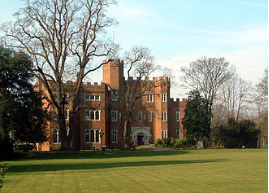
II. Natural Geography (environment and resources)
Climate
Hertford has been the county town of Hertfordshire since Saxon times when it was governed by the king's reeves. By the 13th century, the reeves had been replaced by a bailiff, elected by the burgesses. Charters of 1554 and 1589 established a common council of eleven chief burgesses and a bailiff. Another charter of 1605 changed the bailiff's title to mayor. In 1835, Hertford became a Municipal Corporation; the ratepayers elected twelve councillors, who chose four aldermen, aldermen and councillors composing the council. This body elected the mayor. Since 1974, Hertford has been within the East Hertfordshire district of Hertfordshire. The headquarters of Hertfordshire County Council is at County Hall in Hertford. East Herts District Council's offices almost adjoin County Hall, and there is also a Hertford Town Council based at Hertford Castle.
Rail
Hertford serves as a commuter town for London, and has two stations :
Hertford East (on the Hertford East Branch Line) provides a half-hourly service to London Liverpool Street (taking 52 minutes), via Tottenham Hale (which takes 35 minutes). The line is operated by Greater Anglia.
Hertford North (on the Hertford Loop Line) has a service every 20 minutes off-peak to London Moorgate station (taking 54 minutes), via Finsbury Park , (it takes 37 minutes to Finsbury Park station) (change for King's Cross) and hourly northwards to Stevenage (for onward connections via the East Coast Main Line) and Letchworth (change for Cambridge). Services are operated by Great Northern. This service uses Class 717 trains
Road
The A414 main road now bypasses the town centre to the south and runs east to Harlow, the M11 and Chelmsford and runs west to Hatfield, the A1, St Albans and the M1. Hertford also lies just west of the A10 and the Kingsmead Viaduct which links it south to London and the M25 and north to Royston and Cambridge.
Bus and coach
The town's bus services are run by a number of companies, most running from the bus station on Bircherley Green, destinations include Bishop's Stortford, Royston, Stevenage and Waltham Cross. Many of these routes receive subsidies from Hertfordshire County Council.
The town also lies on the 724 coach route (operated by Arriva the Shires) which provides an hourly service from Harlow through the town and on to Hatfield, Welwyn Garden City, St Albans, Watford and Heathrow. Although bypassed by most National Express routes Hertford (Mill Road) is served by the 767 service which operates from Nottingham to Stansted Airport via Leicester and Luton Airport.
River
During the months of April to September a scheduled Waterbus operates between Bircheley Green Shopping centre, Hertford and Ware priory. The Waterbus runs on Saturdays and Sundays only except in August when it also runs on Thursdays and Fridays. The bus takes in the Floodplain along the River Lea and has a total journey time between 75–90 minutes. The Waterbus is accessible to all and has two toilets one of which has disabled access. Refreshments are available on the Boat and there is also a licensed bar on board. The Boat can accommodate 60 passengers on each journey and people with Pushchairs, Wheelchairss and well behaved Dogs are welcome aboard.
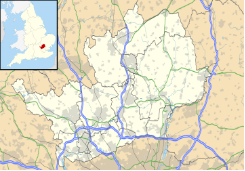
III. Economy
The Hertfordshire economy's output was worth £35.9 billion in 2016, representing £30,600 per head. This ranks the county as having the 27th highest GVA per head out of 173 Nuts 3 areas .
Our 2018 Outlook Report confirms that Hertfordshire is marginally ahead of the UK average in terms of its GVA per hour worked – the official measure of productivity. This puts Hertfordshire in the top 10 of 38 LEP areas by productivity, where GVA per hour worked is 0.7% above the average for the UK. However, it is clear from ONS data that the rest of the UK’s productivity is closing the gap with Hertfordshire and is improving at a higher rate. In 2011, Hertfordshire was 2% above the UK average, yet prior to the recession of 2008, it was 12% above the UK average. Hertfordshire was ranked as the fifth most productive LEP area in 2006 but had slipped to 10th place by 2016.
Reference Website:
https://www.hertfordshirelep.com/media/7210/hlep-economic-outlook-2018.pdf
IV. Industrial Characterisitics
Major industries:
From origins in brewing and papermaking, through aircraft manufacture, the county has developed a wider range of industry in which pharmaceuticals, financial services and film-making are prominent. Today, with a population slightly over 1 million, Hertfordshire services, industry and commerce dominate the economy, with fewer than 2000 people working in agriculture, forestry and fishing.
Hertfordshire is one of the historic counties of England first recorded in the early 10th century. Its development has been tied with that of London, which lies on its southern border. London is the largest city in Western Europe; it requires an enormous tonnage of supplies each day and Hertfordshire grew wealthy on the proceeds of trade because no less than three of the old Roman roads serving the capital run through it, as do the Grand Union Canal and other watercourses. In the 19th century, rail links sprang up in the county, linking London to the north. Hatfield in Hertfordshire has seen two rail crashes of international importance (in 1870 and 2000).
Major projects and related introductions:
1. Stevenage Town Centre
Stevenage is set for a £1bn investment over the next 20 years and it will completely transform the town. The first place set for a face lift is the town square where empty retail units will be converted into flexible office spaces and residential flats as well as restaurants and bars. It's hoped by adding in these bars and restaurants, the town will be far less reliant on retail. A partnership between Stevenage Borough Council and Mace - the consultancy and construction business behind The Shard and Tottenham Hotspur Stadium - will launch this first SG1 £350m program.
2. Brookfield Riverside development
A £400m retail and leisure development is set to transform Cheshunt by the end of 2022. The Brookfield Riverside development will provide up to 1,500 new homes, a new civic centre for the borough, office floor space and a three-form entry primary school. Broxbourne Borough Council, in partnership with Sovereign Centros, will be building the development on a 50-acre site at the Turnford interchange on the A10, three miles north of junction 25 of the M25. Most of the land is currently fields and forest and the immediate Riverside plan has been billed as a new 'town centre'.
Reference Website:
https://www.hertfordshiremercury.co.uk/news/hertfordshire-news/11-hertfordshire-towns-set-transformed-3323525
V. Attractions
1. Hertford Heritage Trail:
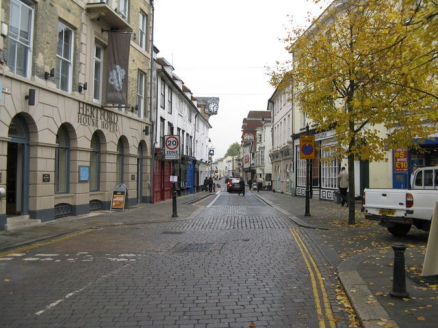
To show just how many curiosities await you on Hertford’s streets, there are more than 41 stops on the town’s Heritage Trail. In the shadow of the grand Georgian Shire Hall, Fore Street is extremely pretty. The entire length of the street merits a look, but the western end is a joy for the rare pargeting (decorative stuccowork) visible on the Salisbury Arms (1570) and the terrace of mid-17th-century houses at 3-13. Wallace House at 11 St Andrew Street is obligatory.
2. Hertford Castle:
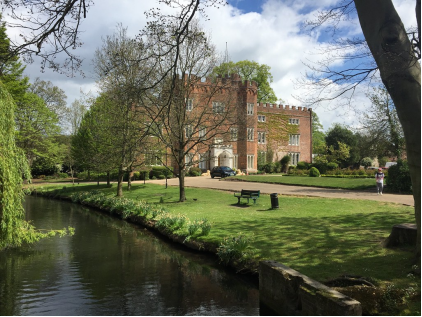
Straddling the River Lea, Castle Gardens is a beautiful place to pass an hour or two. These are the grounds of Hertford Castle, on a site first fortified by the King of the Anglo-Saxons, Edward the Elder in the early 10th century.
3. Hertford Museum:
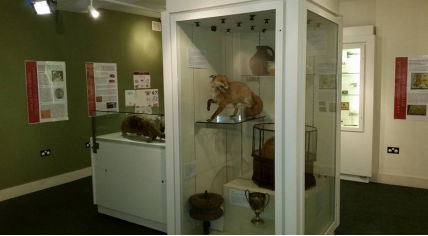
The Hertford Museum dates back to 1903, and was founded by a pair of businessmen, the Andrews Brothers, calling on their own collection. The current location is a 17th-century townhouse, and the museum was given a Heritage Lottery makeover a decade ago, reopening in 2010. There are more than 100,000 objects in the collection so only 5% of this sizeable reserve can be shown at one time.
Reference Website:
https://www.thecrazytourist.com/15-best-things-to-do-in-hertford-hertfordshire-england/
VI. History
Possibly the first mention of the town was in 673 AD: the first synod of a number of the bishops in England was held either in Hertford or at Hartford, Cambridgeshire. It was called by Theodore of Tarsus; decisions included the calculation of the date of Easter. In 912 AD, Edward the Elder built two burhs (earthwork fortifications) close by the ford over the River Lea as a defence against Danish incursions. By the time of the Domesday Book, Hertford had two churches, two markets and three mills. The Normans began work on Hertford Castle, and Hertford Priory was founded by Ralph de Limesy. King Henry II rebuilt the castle in stone, but in 1216, during the First Barons' War, it was besieged and captured after 25 days by Prince Louis of France. The castle was regularly visited by English royalty and in 1358, Queen Isabella, wife of Edward II, died there. The priory was dissolved in 1536 and subsequently demolished and in 1563, the Parliament of England met at the castle because of an outbreak of plague in London. Hertford grew and prospered as a market and county town; communication was improved by the construction of the Lea Navigation Canal in 1767 and the arrival of the railway in 1843. The Port Hill drill hall was completed in 1898 and Yeomanry House was brought into military use in 1910.
VII. Culture
Hertford Theatre, previously known as Castle Hall, is a modern theatre, cinema and art gallery complex at The Wash in the town centre. The Hertford Corn Exchange is a building where entertainment such as comedy and art exhibitions take place. Hertford has many food, drink and entertainment establishments which have grown in number considerably since the eighties and nineties. It attracts people from nearby towns, and often the North London suburbs. There are approximately 25 pubs and clubs in the area, and around 35 restaurants, takeaways and snack bars. Hertford also benefits from public swimming pool and gym facilities and a small skatepark, all situated on Hartham Common.
Hertford Cricket Club is an English amateur cricket club, located in Hertford, the county town of Hertfordshire. Cricket records for a Hertford club go back a far as 1825, however the club in its present form has been in existence since 1860. The club plays its matches at Balls park, Hertford. Currently the club runs five teams and all the teams play in the local league.
VIII. Other information
In the town are the remains of the original Hertford Castle, principally a motte. The castle's gatehouse, the central part of which dates to a rebuild by Edward IV in 1463, is the home to Hertford Town Council. The Motte, from the original Motte and Bailey castle in Hertford, can be found just behind Castle Hall, a short distance from the modern castle.
There are several churches in the town, All Saints', and St Andrew's, are late and mid 19th century respectively, although both stand on the sites of medieval places of worship. In the northern suburb of Bengeo lies St Leonard's, a two-celled Norman church of considerable architectural interest.
In Railway Street can be found the oldest purpose-built Quaker Meeting House in the world, in use since 1670.
The Parliament of England temporarily moved to Hertford during a plague outbreak in London in 1563. This is why the main square in the town, Parliament Square, is so named, although it is a twentieth-century creation.
The home of Alfred Russel Wallace (see above), now named Wallace House, can be found at 11 St. Andrew St. and is marked with a plaque.
Built in 1779, the Shire Hall was designed by Robert Adam.The ground floor houses Court Rooms.
The Hertford Corn Exchange was built on the site of a former gaol. After years in the doldrums it has now reverted to being a live entertainment venue.
The Egyptian House in Fore Street, built c. 1824, is an early example of Egyptian revival architecture. It was a grocery store from the Victorian era until the 1960s, and is currently a restaurant.
In Cowbridge, there is a Prince Albert Cottage.The first of these cottages was originally built in Hyde Park by the Society for Improving the Condition of the Labouring Classes in 1851 at the time of the Great Exhibition. Prince Albert was involved in their design and financing.
Hertford Museum is housed in a 17th-century historic town house, with a Jacobean-style knot garden.
A stained-glass window in St Andrew's Church is part of a fringe theory that links Hertford to the Knights Templar and the Holy Grail.
IX. Contact information
Mayor/Officer: Bob Deering
Tel: 01992 552885
Mail: tic@hertford.gov.uk
